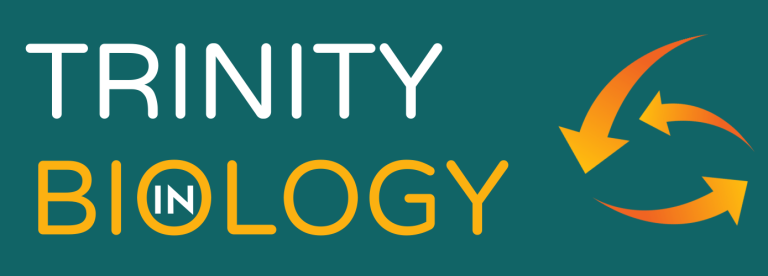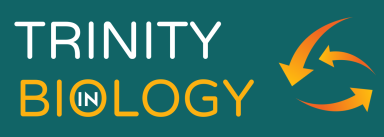Biology is evolving...
into the Holy Trinity
What is this
ALL ABOUT?
Click the YouTube video to find out.
And listen to AI software (NotebookLM) give a 10 minute podcast about the extraordinary scientific discovery and revolutionary new theory of biology which is TRINITY in BIOLOGY.
It is fair to say AI is pretty impressed by TRINITY in BIOLOGY. The big question is, are you? Let us know what you think of the podcast, and TRINITY in BIOLOGY in general.
A Scientific Discovery
LIKE NO OTHER
We will get straight to the point. We have made a scientific discovery unlike any other in the history of science.
How can we possibly make such a claim? Because this particular scientific discovery is not just about the natural world, it is also about God. This is the first ever scientific discovery about God. Not just any God, but the God of Christianity. The Holy Trinity.

Biology and the Holy Trinity
ARE DIRECTLY CONNECTED
What is the Holy Trinity? The God of Christianity is not merely an infinitely monotonous spirit, the Holy Trinity is a structure.
If the notion that God is a structure doesn't surprise you, then perhaps this will: the structure of the Holy Trinity is found in all living cells. More specifically, the core biochemistry of all living cells has exactly the same structure as the doctrine of the Holy Trinity. In other words, Every living cell contains nothing less than the image of the Holy Trinity.

This Discovery Was Predicted
1600 YEARS AGO
In the 5th Century, St Augustine of Hippo claimed the universe should contain vestiges of the Holy Trinity.
These are like divine fingerprints left by God after the creation of the universe. However, Augustine never found any vestiges, though this is hardly surprising since Augustine lived 1000 years before the start of science. Many remarkable discoveries in biochemistry have been made in just the last few decades, and what do we now see? Living cells are not merely atoms and molecules governed by the laws of physics and chemistry, they contain the imprint of the Trinity. Augustine wasn't wrong after all, the bishop of Hippo was 1500 years ahead of his time.

Biological Life is the
IMAGE OF DIVINE LIFE
The Holy Trinity has actually imprinted its own image within cells. That is the ineluctable conclusion of this discovery. But this raises the obvious question: why would the Trinity do such a thing?
While biochemistry and cell biology now understand an enormous amount about cells, there is one question they still cannot answer: what is life? There is something about cells which science simply cannot see. That's because life did not come from physics and chemistry, life is an eternal structure imprinted in organic matter: the image of the Holy Trinity in the cell.

Would you like to see the image of God?
What a silly question
Of course you would. After all, who wouldn't? But first we need to make something clear.
Do not expect to see the most complex, elaborate or mesmerising visual image you have ever laid eyes on. Even though God is infinite, the image of the Holy Trinity is not infinite.

Because what is imaged is not God's infinite essence, but rather God's structure which is finite.
Why is God's structure finite? Because there are only three in the Holy Trinity: the Father, the Son and the Holy Spirit.

Here then is the image of the Holy Trinity in the cell
Schematic diagram
of the Holy Trinity

The structure of
DNA, RNA and protein

DIVINE IMPRINTING
What exactly is the structure of the Holy Trinity? And what are DNA, RNA and protein? It doesn't matter at this initial stage. Let's face it, you just wanted to see the image of God didn't you. And who wouldn't?
The main point here is, the DNA, RNA, protein system is identical to the structure of the Holy Trinity. And the only rational explanation for this obvious and extraordinary agreement, is that DNA, RNA and protein really are the image of the Holy Trinity.
But what exactly does this mean? Well, it means DNA, RNA and protein are not the product of natural processes as is automatically assumed by mainstream science today. At some point in the past, the Holy Trinity directly imprinted the DNA, RNA, protein system upon organic matter, using its own divine structure as the template for their structure.
Sounds unbelievable, for sure.
But anytime you find yourself doubting, just look at the two pictures above:
the structure of the Holy Trinity and the DNA, RNA, protein system.
This is why we created:

Because the image of the Holy Trinity explains:
✅ What is life?
✅ Origin of life
✅ Origin of the genetic code
✅ Origin of genetic information
✅ Origin of transcription
✅ Origin of translation
✅ Origin of DNA
✅ Origin of the cell
✅ The three domains of life
✅ LUCA (Last Universal Common Ancestor)
✅ Origin of biology
✅ The absence of aliens
✅ And more...
And we have only just got started!
EXPLORE
TRINITY in BIOLOGY

TRINITY
TRINITY in BIOLOGY is more than a hypothesis, it is a revolutionary discovery: the image of the Holy Trinity in living cells.

LIFE
TRINITY in BIOLOGY is more than a ground-breaking scientific discovery, it is the first scientific theory of life.

BIOLOGY
TRINITY in BIOLOGY is even more than a theory of life, it is a grand unified theory of biology.

Meet the Founder
TRINITY in BIOLOGY was founded in 2025 by Philip Rushton. Find out more about Philip and how he discovered the image of the Holy Trinity in cells.
QUOTATION CORNER
"Present attempts to develop adequate principles of life represent perhaps the greatest conceptual crisis in the history of science"
Richard Davenport
Professor of Developmental Biology,
University of Illinois
An Outline of Animal Development (1979)
"The answer to the origin of life may well turn out to be the
most consequential in the
history of science"
Franklin M. Harold
Professor of Molecular Biology,
University of Colorado
The Way of the Cell (2001)
"For whatever biology will be tomorrow, it will not be
merely an extrapolation
of what it is today"
Robert Rosen
Professor of Biophysics,
Dalhousie University
Life Itself (1991)
© 2025 TRINITY in BIOLOGY - All rights reserved
We need your consent to load the translations
We use a third-party service to translate the website content that may collect data about your activity. Please review the details in the privacy policy and accept the service to view the translations.
